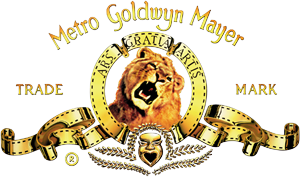This post was first published on 15th October, 2012.
A trademark is a word or symbol which is associated with a product or company. It is one of the important Intellectual properties of any Company. With the diversification of means for branding products, sound marks/sound logos (such as Intel’s “Intel inside” musical jingle”; MGM lion’s roar) have got prominence and their protection has become an important aspect. No company would desire such a unique identification sound to be moving into public domain. So, various countries like U.S, Germany have started registering such distinctive marks.
The decision of the Canadian Federal Court in the case (Metro-Goldwyn-Mayer Lion Corp. v Attorney General of Canada et al., T-1650-10) regarding registration of Metro-Goldwyn-Mayer’s iconic lion’s roar (heard at the outset of most MGM movies) has changed the position in Canada. MGM filed the application for the sound mark bearing application number 714,314 on Oct 6th 1992 with the Canadian Trademarks Office, where it was rejected on the grounds that it did not meet the definition given in Trademark Act (failure to satisfy the requirements in s 30(h)&which requirement for non-word marks to contain a drawing of the mark). Through an appeal MGM approached the Federal Circuit on 12th October 2010.The Federal circuit set aside the decision of the Registrar of Trademark and ordered for the advertisement of the application in the Canadian Trademarks Journal and later the mark was registered. The details of the registered MGM’s Lion roar (Registration No.TMA828890) can be accessed from here.
Following this decision,Canadian Intellectual Property Office (CIPO) has published a Notice indicating that it will accept applications for sound marks along with the requirements. The burden is on the applicant to prove the distinctiveness and to provide adequate description. Now Canada is in the line of US, Australia and others, this shift encourages Companies to protect their sound marks through law. The new Canadian amendment can be accessed here and the requirements for registration can be accessed from here as published on the CIPO website.
Contributed By
YSN Murthy
Source:
2. http://www.patentable.com/the-lions-roar-sound-marks-now-available-in-canada/
3. http://jiplp.oxfordjournals.org/content/early/2012/06/21/jiplp.jps094.full
The decision of the Canadian Federal Court in the case (Metro-Goldwyn-Mayer Lion Corp. v Attorney General of Canada et al., T-1650-10) regarding registration of Metro-Goldwyn-Mayer’s iconic lion’s roar (heard at the outset of most MGM movies) has changed the position in Canada. MGM filed the application for the sound mark bearing application number 714,314 on Oct 6th 1992 with the Canadian Trademarks Office, where it was rejected on the grounds that it did not meet the definition given in Trademark Act (failure to satisfy the requirements in s 30(h)&which requirement for non-word marks to contain a drawing of the mark). Through an appeal MGM approached the Federal Circuit on 12th October 2010.The Federal circuit set aside the decision of the Registrar of Trademark and ordered for the advertisement of the application in the Canadian Trademarks Journal and later the mark was registered. The details of the registered MGM’s Lion roar (Registration No.TMA828890) can be accessed from here.
Following this decision,Canadian Intellectual Property Office (CIPO) has published a Notice indicating that it will accept applications for sound marks along with the requirements. The burden is on the applicant to prove the distinctiveness and to provide adequate description. Now Canada is in the line of US, Australia and others, this shift encourages Companies to protect their sound marks through law. The new Canadian amendment can be accessed here and the requirements for registration can be accessed from here as published on the CIPO website.
Contributed By
YSN Murthy
Source:
2. http://www.patentable.com/the-lions-roar-sound-marks-now-available-in-canada/
3. http://jiplp.oxfordjournals.org/content/early/2012/06/21/jiplp.jps094.full



